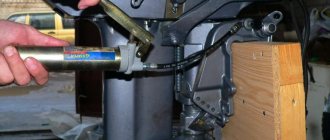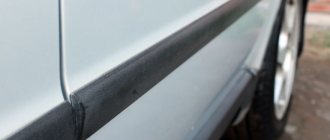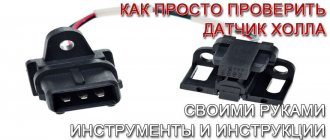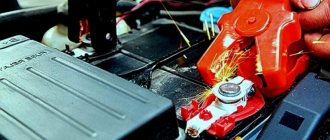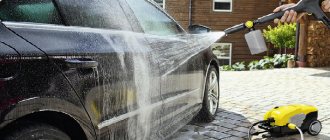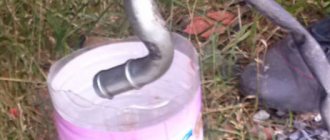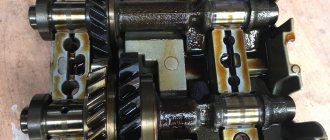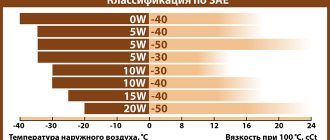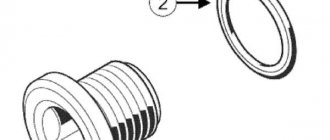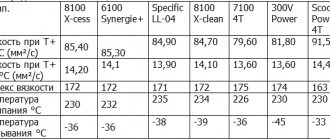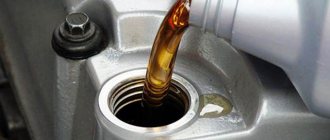Choosing universal lubricants from a wide range from a variety of manufacturers can be confusing. They differ in price, but all are supposedly capable of working miracles. Perhaps the most famous of the lubricants is WD-40, which, like Jeep in the world of SUVs, gave its name to an entire segment. Does this mean that the Vedashka is the best? Or are there alternatives?
In fact, virtually every manufacturer of automotive chemicals and cosmetics has at least one multifunctional penetrating drug in its case. Are they all equally effective and can cheap ones be of high quality? To answer these questions, we conducted a consumer test of multi-purpose lubricants.
The instructions for using universal lubricants indicate that they eliminate squeaks, displace moisture, clean and protect against corrosion, and eliminate sticking and jamming of bolts and mechanisms. Simply put, such lubricants allow you to unscrew rusted and stuck bolts almost with the hands of a baby (if you believe the manufacturers’ instructions). Naturally, only after they have been applied to the required part or surface.
Grands and analogues
Not all even experienced motorists know that WD-40 has analogs that are similar in quality, but at the same time significantly different in price. There are also ones that are comparable in cost, but most either prefer to take a familiar product or are guided by the availability or popularity of the brand.
For our consumer test, multifunctional drugs of different price categories were selected - both from well-known ones. Namely:
- PiTon universal lubricant;
- multifunctional lubricant Nowax Cobra NX-40;
- XADO universal oil;
- “Super lubricant “Nanoprotek”;
- Auto Assistance universal oil;
- universal aerosol WD-40.
The most budget-friendly of the test participants turned out to be Auto Assistance, the most expensive product (in terms of actual volume in milliliters) was WD-40.
WD-40 - what is it and where is it used?
In almost every auto repair shop or private garage, in addition to all kinds of keys, tools, fixtures and other equipment, there is a product labeled “WD-40”. This aerosol, popularly called simply “Vedashka,” can greatly facilitate car repair and maintenance. Without the use of this product, stuck and rusted bolted connections that have not been loosened for a long time would still be a “headache” for an auto mechanic. But having WD-40 on hand, it is enough to treat the bolt or nut, wait a little for the product to take effect and begin unscrewing, which will be much easier after treatment. And this is only one of the properties of this product.
Rules of the game
The comparison of lubricants was carried out in domestic conditions using improvised materials. We emphasize that this is a consumer test, not a laboratory test. Accordingly, its results are for informational purposes only and cannot be considered official.
To check the quality of the tested universal lubricants, we used the most common rusty nails and bolts with nuts. The latter were specially tightened with a tool so that it was impossible to unscrew them by hand. The goal is to treat them with products, and after 30 minutes try to unscrew them manually, thus assessing the effectiveness of using lubricants as a “liquid key”.
| The product's name | Cylinder volume / actual volume, ml | Price, UAH. | Price for 100 ml, UAH. |
| Piton | 210/150 | 40,98 | 27,32 |
| Cobra NX-40 | 200/150 | 70,98 | 47,32 |
| XADO | 210/150 | 45,96 | 30,64 |
| "Nanoprotek" | 210/170 | 99,00 | 58,23 |
| Auto Assistance | 210/150 | 30,96 | 20,64 |
| WD-40 | 100/82 | 79,25 | 96,64 |
The nails were placed vertically in a container with drugs. The goal is to determine the so-called capillary effect (how quickly and high the lubricant rises). This allows you to determine the speed and depth of penetration of the lubricant, as well as evaluate the viscosity.
Characteristics and composition of VD-40
The main property of WD-40 is not the displacement of moisture. This liquid is valued for its unique ability to get into any microscopic holes and crevices. Let's look at how bolts and nuts that are tightly stuck as a result of corrosion are freed.
- the liquid penetrates into all possible cracks and spaces between rust and normal metal;
- after some time (up to 12 hours), delamination of corrosion and steel occurs;
- at the same time, small flakes of oxidized metal lose their connection with each other;
- If you turn the fastener after the penetrating lubricant has finished working, the corrosion will disintegrate and the nut will come off.
Another property is reduced friction. The liquid creates a thin layer with a low resistance coefficient. Metal, rubber, plastic - move freely relative to each other. For a while, the vane can replace the grease.
A derived characteristic is the elimination of squeaks. Again, the effect is short-lived, especially in areas of high stress. This surface should be treated as quickly as possible with normal grease. And as a temporary (operative) solution, WD-40 is irreplaceable.
Protective property. Some compounds produced under this brand adhere well to the surface and prevent contamination and water ingress.
Checking life hacks related to the use of VD-40 - video
Defrosting car locks. Truly an invaluable property. The only problem: if the car is frozen (outside the garage), WD-40, as luck would have it, will end up inside the frozen car interior.
Almost zero electrical conductivity. Again, this does not apply to all types of VD-40 liquid. Contacts in connectors or blocks are treated with certain compounds.
- Moisture is displaced and a barrier is created for its penetration.
- Corrosion protection is provided.
- Thanks to the lubricating effect, it will not be difficult to separate such pads in the future.
Dissolving dirt. Again, one of the properties for which vedehu is so loved. The most ossified oil deposits (with the exception of temperature slag build-ups), stuck-on dirt. glue residues, devulcanized rubber gasket: all these troubles can easily be overcome by the magical all-penetrating composition.
Which recipe for the analogue of VD 40 is correct?
There are a lot of instructions and options on the Internet on how to make an analogue of VD 40 . All of them were developed based on available information, according to which the technical aerosol “Vedeshki” includes:
- solvent white spirit - 50%
- propellant, carbon dioxide - 25%
- mineral oil - 15%
- inert ingredients - 10%
It is on the basis of such components that in most cases an analogue of a liquid key is made. But, nevertheless, in pursuit of revealing the secret recipe for WD-40 fluid, there are several options using oil, adding solvents, penetrating liquids (kerosene), preservatives or rust-corroding ingredients.
real recipe was found experimentally . It included the following substances:
- white spirit - 45–50%;
- paraffin distillate - 15–25% (must be heavy and solvent-free);
- hydrotreated isoparaffins - 12–18%;
- carbon dioxide - 2–3% (a mixture of petroleum solvents and paraffin distillate).
Since most of them are not readily available in their pure form, as a rule, several other similar substances are mixed, which also allow you to perform the main task - unscrew a stuck or rusted nut. These more affordable ingredients are often found in every man's garage.
What is WD-40 and how did it come about?
Universal penetrating lubricant WD-40 appeared in the bowels of the American in 1953 in San Diego, California.
The company was engaged in aviation lubricants and was subsequently renamed WD-40. Commercial success helped Rocket Chemical Company grow from a small enterprise with a team of three people into an international company supplying products to 150 countries. Its inventor, chemist Norman Larsen (or engineer Iver Norman Lawson according to other sources), worked to create a means to protect aircraft bodies from corrosion. The abbreviation used as the name means water displacement. 40 is presumably the number of the attempt with which the required composition was developed.
The product was first used on the skin of Atlas rockets. It should be noted that the original WD-40 differs from the modern product because it was not used in aerosol form and did not contain aromatic substances.
The product reached a wide audience only 5 years after its creation, in 1958. Since then, consumers have discovered many other properties in it. In addition to protecting against rust, WD-40 is used as a lubricant and penetrating oil - a product that penetrates the pores of oxide deposits on a metal surface and destroys them (deposits).
Popular recipes for making WD-40 yourself
The essence of such a lubricant is to penetrate as deep as possible into the joint, soak it and allow it to spin “like clockwork.” Some car owners say that the best liquid key is vinegar essence or even ammonia! But the fact is that both options are very dangerous and are suitable exclusively for removing rust from bolts. Since the “vedeshka” is often used not only for its intended purpose, it is better to use a preparation based on a solvent, hydrocarbons and lubricants or preservatives.
An alternative penetrating lubricant can be made with two, three or more components. The most common budget method is to take: one part motor oil (you can even use waste if you use it only for nuts), 4 parts galosh gasoline and the same amount of white spirit /acetone solvent. You can supplement and improve this entire mixture with another ½ part of the brake fluid .
DIY VD-40 - video
Recipe one
This version of the “liquid key” is as similar as possible to the real composition of WD-40. To prepare such a lubricant, you will need to mix in equal parts:
- kerosene, diesel fuel, isopropyl alcohol (20% each);
- acetone, solvent, castor oil or silicone, as well as surfactants, if available (10% each).
Recipe two
If silicone and surfactants may not be found in the garage, then oil and solvent must be there. With them you can make a lightweight version of penetrating lubricant. For this you will need:
- diesel fuel or kerosene (40%);
- solvent or gasoline (so 40%);
- castor oil (20%).
Castor oil in the mixture is used as a lubricant. Gasoline, solvent or acetone (they can also be replaced with isopropanol or toluene) act as a low-boiling solvent. Hydrocarbons that penetrate well into cracks are replaced with diesel fuel (diesel fuel) and kerosene.
Recipe three
- Motor oil – 1 part. You can use either synthetic 5W30 or semi-synthetic 10W40.
- Galosh gasoline - 3 parts. It is taken because these are light hydrocarbons, noted in the original composition of VD-40. And the most volatile is gasoline.
- White spirit - 4 parts. This product is most often used because it is a quickly evaporating solvent.
- Silicone – 1 part. Silicone oil is used because it has a water-repellent effect and remains on the surface for a long time.
If the mixture will be used to lubricate outdoor locks and hinges (and not unscrew car bolts or lubricate rubber seals), then instead of silicone oil, you can add a few grams of paraffin (by melting a regular candle before mixing and dissolving it with white spirit). It will form a film and give the mixture water-repellent properties.
In some cases, transformer oil is simply used instead of silicone and motor oil. Due to the rosin dissolved in it, the surface is lubricated and preserved from external influences. Thus, such a product will protect against corrosion no worse than the Vedeshka analogue, remove squeaking, release mechanisms jammed from rust and become hydrophobic.
Recipe four
- kerosene - 75%;
- transmission oil - 20%;
- solvent 646 - 5%.
The resulting mixture is applied to the joint in advance (1-2 hours before the joint needs to be untwisted).
Recipe five
Penetrating lubricant, which will be superior to store-bought ones and is suitable exclusively for unscrewing or separating heavily rusted parts, consists of 3 substances. Composition basis:
- White spirit (pour a little more than half a glass).
- Dry lubricant (half a teaspoon). You can take graphite, molybdenum or forum (reduces friction).
- Rust converter (in proportion 1 to 1 to solvent).
WD 40 grease: characteristics
Many people think that if they treat with wd 40 , they will be lubricated and protected from further corrosion. But this is not at all true, wd-40 displaces moisture, does not lubricate parts, and is not an anti-corrosion protection.
WD-40 has penetrating properties, which allows it to seep into rusted threaded joints, etc., but WD-40 is hygroscopic, i.e. absorbs moisture (like brake fluid).
Therefore, if you pour WD-40 into rusted lock cylinders (without additionally lubricating them) - after the first slight turn of the key, after a while you will find that the locks began to work even worse, since WD-40 washed away the lubricant in the lock cylinder. This is due to the fact that WD-40 takes moisture from the atmosphere and leaves it inside the mechanism, while corrosion on these parts develops even faster, and the WD 40 liquid itself evaporates.
WD-40 does not replace lubricant and does not have anti-corrosion properties.
Petroleum distillates in WD-40 contribute to the formation of a very thin and quickly evaporating lubricating film. Therefore, protection against corrosion will only be short-term, and this technical aerosol has practically no lubricating properties.
Benefit
